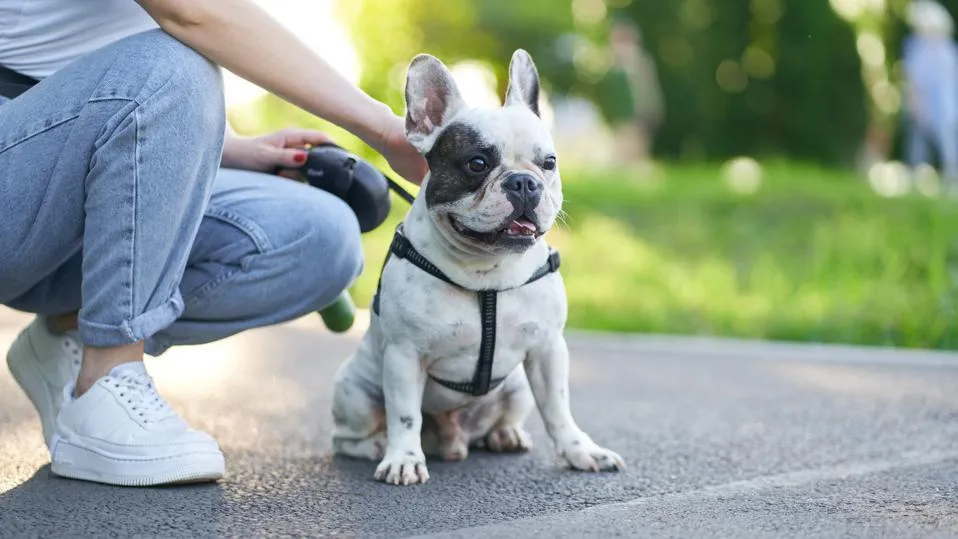The Miniature Pinscher, affectionately known as the “King of Toys,” is a breed that packs a big personality into a small package.
These pint-sized pooches are renowned for their fearless nature, lustrous coats, and distinctive high-stepping gait.
If you’re considering adding one of these regal companions to your family, or simply want to learn more about this fascinating breed, you’ve come to the right place.
I’ve had the pleasure of owning a Min Pin for over a decade, and I can attest to their larger-than-life personalities.
My little guy, Maximus, has been a constant source of entertainment and companionship.
From his confident strut to his unwavering belief that he can take on dogs ten times his size, he’s truly earned his royal title in our household.
Let’s dive into the world of Miniature Pinschers and discover what makes these tiny titans so special.

The History and Origins of the Miniature Pinscher
Contrary to popular belief, the Miniature Pinscher isn’t simply a scaled-down version of the Doberman Pinscher.
In fact, this breed predates the Doberman by several centuries!
The Min Pin’s exact origins are somewhat shrouded in mystery, but most experts agree that they originated in Germany.
These little dogs were initially bred as ratters, using their quick reflexes and fearless nature to keep homes and stables free of vermin.
Some key historical points about the Miniature Pinscher:
- They were first recognized as a distinct breed in Germany in 1895
- The breed was introduced to the United States in the early 1920s
- The American Kennel Club officially recognized the Miniature Pinscher in 1929
Physical Characteristics of the Miniature Pinscher
Miniature Pinschers may be small, but they have a distinct and eye-catching appearance.
Here’s what you can expect from this breed’s physical traits:
Size and Weight
- Height: 10-12.5 inches at the shoulder
- Weight: 8-10 pounds
These compact dimensions make Min Pins perfect for apartment living or for those who want a small but spirited companion.
Coat and Colors
Miniature Pinschers have a short, smooth coat that’s easy to maintain.
Their coat comes in several colors, including:
- Red
- Stag red (red with intermingling of black hairs)
- Black and rust
- Chocolate and rust
- Blue and rust
Distinctive Features
- Wedge-shaped head
- Almond-shaped eyes
- Erect, pointed ears (natural or cropped)
- High-set tail, typically docked in countries where it’s legal

The Miniature Pinscher Personality: Big Dog in a Small Package
If there’s one thing that truly sets the Miniature Pinscher apart, it’s their outsized personality.
These dogs embody the saying “it’s not the size of the dog in the fight, it’s the size of the fight in the dog.”
Key personality traits of the Min Pin include:
- Fearlessness: They’ll confidently approach much larger dogs or new situations
- Intelligence: Quick learners who enjoy mental stimulation
- Energetic: Always ready for play or adventure
- Loyal: Forms strong bonds with their family members
- Independent: Can be stubborn and may try to assert dominance
I remember when Maximus, my Min Pin, encountered a Great Dane at the dog park for the first time.
Without hesitation, he marched right up to the gentle giant, tail held high, as if to say, “I’m the boss around here!” It’s this unwavering confidence that endears Min Pins to so many dog lovers.
The Famous “Hackney Gait”
One of the most distinctive features of the Miniature Pinscher is their unique way of moving, known as the “hackney gait.”
This high-stepping trot is reminiscent of a hackney horse, with the front legs moving in a precise, lifting action.
The hackney gait is a natural trait for Min Pins and is highly prized in show rings.
It’s not just for show, though – this gait allows these little dogs to cover ground quickly and efficiently, a reminder of their ratting heritage.

Caring for Your Miniature Pinscher
While Miniature Pinschers are generally low-maintenance in terms of grooming, they do have specific care requirements to keep them healthy and happy.
Exercise Needs
Despite their small size, Min Pins are high-energy dogs who need regular exercise. Aim for:
- At least 30 minutes of active play or walks daily
- Mental stimulation through games and training sessions
- Secure, fenced areas for off-leash play (they’re known escape artists!)
Grooming Requirements
The Min Pin’s short coat is relatively easy to maintain:
- Brush weekly to remove loose hair and distribute skin oils
- Bathe as needed, typically every 4-6 weeks
- Trim nails regularly
- Clean ears and brush teeth weekly
Health Considerations
Like all breeds, Miniature Pinschers are prone to certain health issues. Common concerns include:
- Legg-Calvé-Perthes disease
- Patellar luxation
- Progressive Retinal Atrophy (PRA)
- Epilepsy
- Heart problems
Regular vet check-ups and a healthy lifestyle can help prevent or manage many of these conditions.

Training Your Miniature Pinscher
Training a Min Pin can be both rewarding and challenging. Their intelligence makes them quick learners, but their independent streak can lead to stubbornness.
Tips for successful training:
- Start early: Socialize and train from puppyhood
- Use positive reinforcement: Rewards and praise work best
- Keep sessions short: Their attention span can be limited
- Be consistent: Establish clear rules and stick to them
- Make it fun: Incorporate games and play into training
Remember, patience is key when training a Miniature Pinscher.
Their spirited nature means they may test boundaries, but with consistent, positive training, they can become well-behaved companions.
Is a Miniature Pinscher Right for You?
While Min Pins make wonderful pets for many people, they’re not the right fit for everyone.
Consider these factors before bringing a Miniature Pinscher into your home:
Pros:
- Compact size suitable for apartments
- Low grooming needs
- Lively and entertaining personality
- Loyal and affectionate with family
Cons:
- High energy levels require regular exercise
- Can be stubborn and challenging to train
- May be too boisterous for very young children
- Prone to barking if not properly trained

Conclusion: The Mighty Min Pin
The Miniature Pinscher truly embodies the phrase “good things come in small packages.”
These tiny dogs with big personalities bring joy, laughter, and a touch of regality to any home lucky enough to have them.
From their distinctive hackney gait to their fearless demeanor, Min Pins are a breed unlike any other.
They remind us that confidence and charisma aren’t about size, but about spirit.
If you’re ready for a pint-sized companion with a king-sized personality, the Miniature Pinscher might just be the perfect addition to your royal court.
Just be prepared to be thoroughly charmed by these pint-sized rulers of the toy dog world!

Breed information
| Characteristic | Information |
|---|---|
| Breed Name | Miniature Pinscher (Min Pin) |
| Origin | Germany |
| Group | Toy Group (AKC) |
| Height | 10-12.5 inches (25-32 cm) |
| Weight | 8-12 pounds (3.5-5.5 kg) |
| Coat | Short, smooth, and sleek |
| Colors | Black rust, chocolate rust, red, or stag red (red with black hairs) |
| Lifespan | 12-16 years |
| Temperament | Energetic, fearless, curious, and alert; confident and independent |
| Energy Level | High; very active and needs plenty of playtime and mental stimulation |
| Exercise Needs | High; requires daily walks and interactive play to burn off their energy |
| Trainability | Moderately trainable; intelligent but can be stubborn and independent, requiring patience and positive reinforcement |
| Intelligence | Very intelligent, quick to learn but also strong-willed |
| Good with Children | Generally good with older children; may be too energetic or assertive for very young kids |
| Good with Other Pets | Can get along with other pets if socialized early, but may try to dominate larger dogs |
| Shedding | Low shedding; their short coat requires minimal upkeep |
| Grooming Needs | Low grooming needs; occasional brushing and regular nail trimming |
| Barking Level | High; known for being vocal, especially when alerting to unfamiliar people or sounds |
| Space Requirements | Well-suited for apartment living due to their small size, but requires plenty of activity to stay happy indoors |
| Socialization | Early socialization is key to prevent dominance and ensure good behavior with people and other dogs |
| Health Issues | Prone to patellar luxation, hip dysplasia, Legg-Calvé-Perthes disease, and eye conditions |
| Diet | Requires a high-quality, balanced diet; portion control is important to prevent obesity, which they can be prone to |
| Affection Level | Affectionate and loves being around family members; forms strong bonds, though can be independent |
| History | Believed to have been bred in Germany for hunting rats in homes and stables; often mistakenly thought to be a smaller version of the Doberman Pinscher |
| AKC Recognition | Recognized by the American Kennel Club in 1925 |
| Ideal Living Conditions | Adaptable to both apartment and home living; needs a safe, secure environment as they can be escape artists due to their curiosity |
| Notable Characteristics | Known for their bold personality, sleek coat, and quick, agile movements; often called the “King of Toys” |
| Best Activities | Enjoys agility training, fetch, puzzle toys, and activities that challenge their intelligence and energy |
| Suitability for First-Time Owners | May not be ideal for first-time owners due to their strong-willed and energetic nature, but can thrive with active and experienced owners |
| Protective Nature | Naturally protective and makes a good watchdog despite their small size |
| Playfulness | Highly playful and loves interactive games with family members |
Sources:
- American Kennel Club (AKC): Miniature Pinscher Information
- DogTime: Miniature Pinscher Breed Information
- The Kennel Club: Miniature Pinscher Breed Standard
















